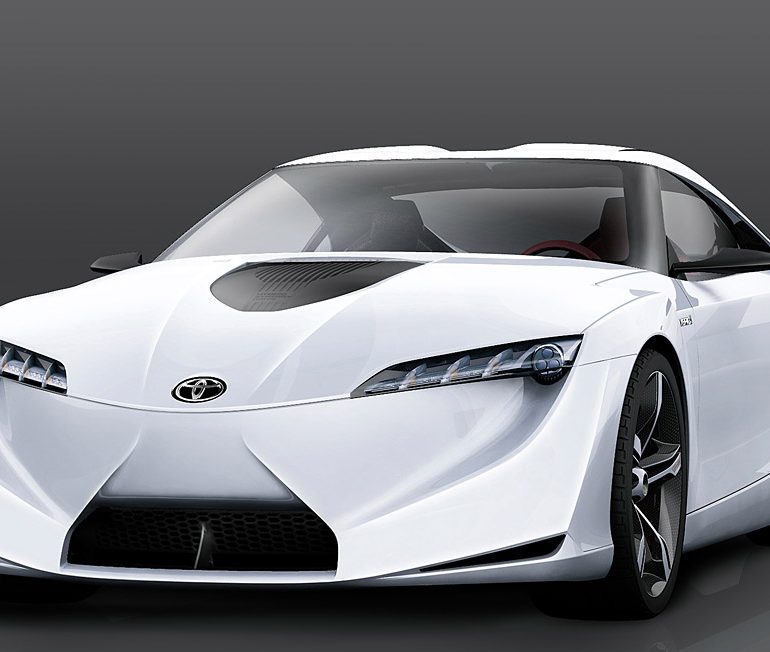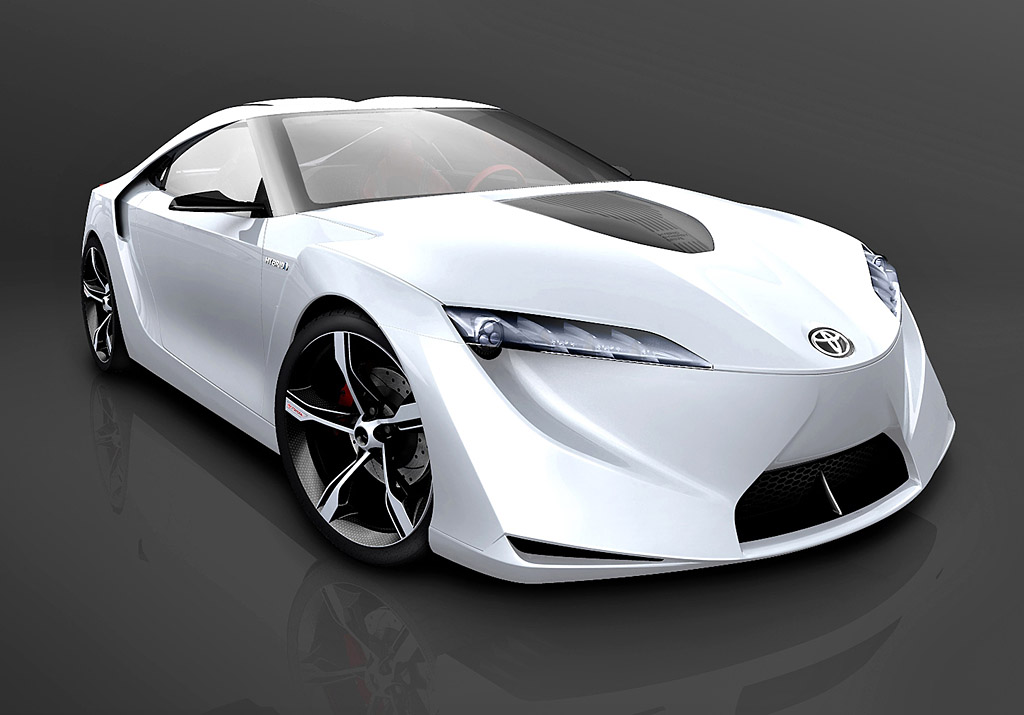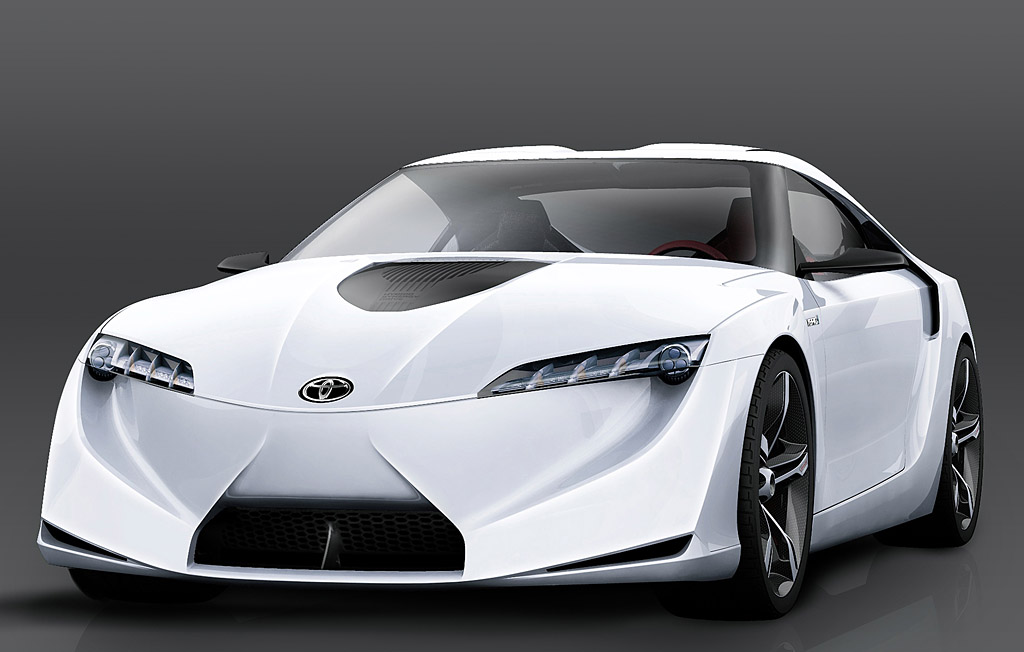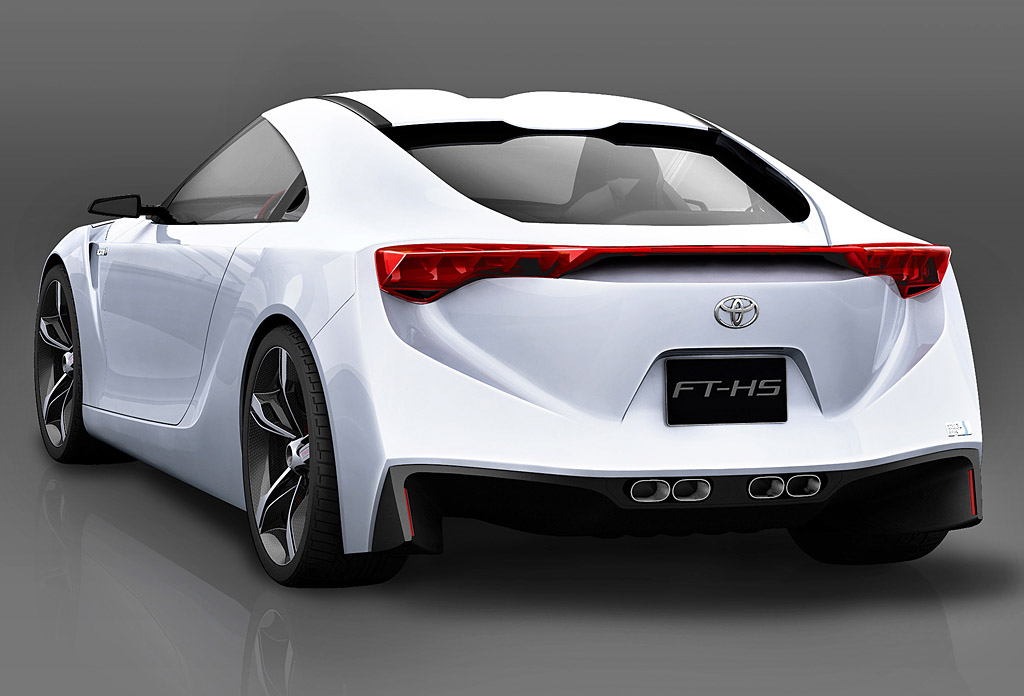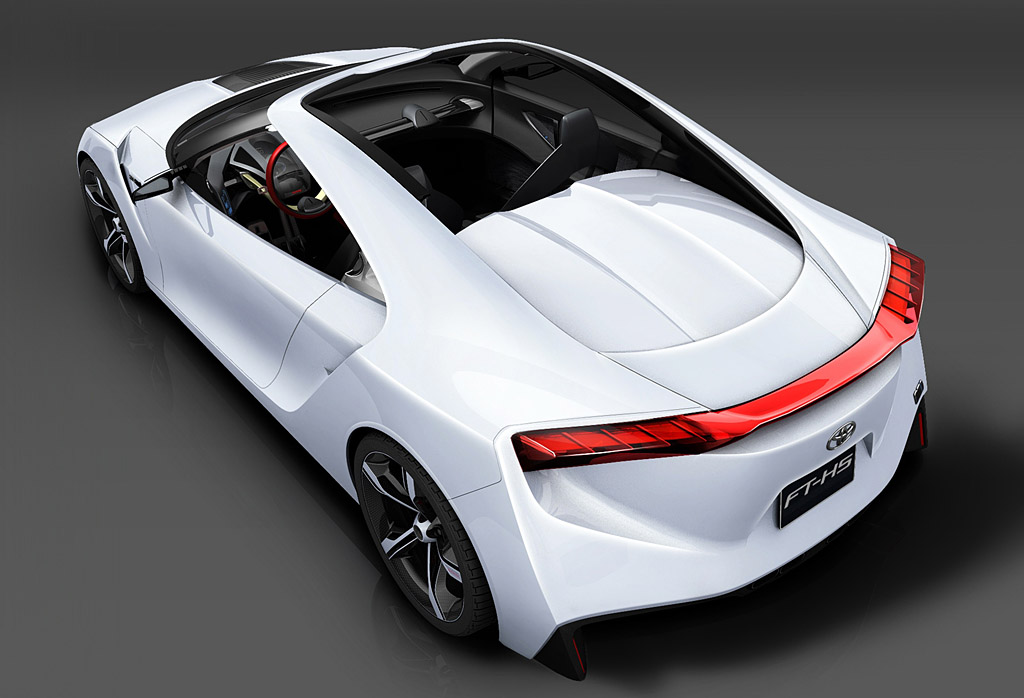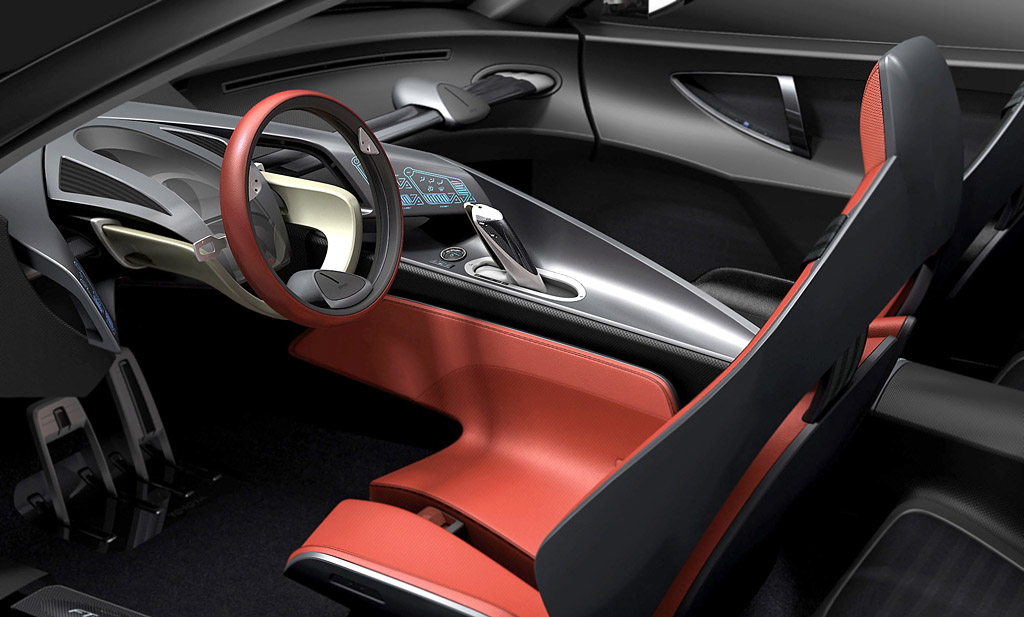2007 Toyota FT-HS Concept
4 January 2007 – Forget the congestion charge, petrol taxes and global warming motoring in the future can still be fun according to Toyota with its FT-HS hybrid sports concept being shown at the 2007 North American International Auto Show.
Pairing a potent hybrid powertrain with essential sports car fundamentals, the FT-HS concept was a joint undertaking of CALTY, Toyota’s North American-based, research and design centre located in Newport Beach, California, and Toyota’s California-based Advanced Product Strategy Group. The design team was assigned the task of creating a mid-priced sports car that integrates ecology and emotion in a concept that addresses the question, ‘What is a suitable sports car for the 21st Century?’.
The FT-HS incorporates hybrid capability while maintaining sports car essentials, such as a sleek profile, lightweight aerodynamic materials, and an advanced high-output powertrain for revolutionary acceleration and optimal performance. This 21st century sports car is fun-to-drive with eco-friendly benefits such as ultra-low emissions and fuel efficiency. The FT-HS appeals to an emerging buyer who grew up eco-conscious and perceives technology as a necessity, not a luxury.
This two-plus-two concept is a front-engine, rear-drive sports car with a projected 0-62mph acceleration in the four-second range. A powerful V6, 3.5L-engine is coupled with a 21st century sports hybrid system with a target power output of approximately 400-horsepower. At a mid-priced market position, FT-HS would be a true attainable exotic with 21st century performance.
FT-HS expresses the core values of a Toyota Brand design strategy that combines two key elements: J-Factor and Vibrant Clarity. J-Factor refers to the local and global acceptance of Japanese-inspired design and cultural sensibilities. Vibrant Clarity is the design language used to express the J-Factor much in the same way that L-Finesse is the language of the Lexus Division.
The exterior design was led by CALTY designer, Alex Shen. From a design perspective, the theme of the FT-HS achieves sleek, taut surfaces in its exterior features, especially in the doors and body style. The front and rear have been sculpted to remove mass around key functional components. Freeform geometrics define the integration of fluid surfaces contrasting hard-edge Aero-Corners which promote smooth airflow and reduce turbulence.
The roof has a distinctive scooped-out section designed to reduce aerodynamic drag and provide head room at the key areas. Made from carbon fibre Kevlar, the roof retracts so that the roof panel and back window pivot fluidly in a downward motion to stow in the rear seat space.
The vehicles triangular profile has a floating C pillar, aero corners, a full upper-body pan, and innovative open top. A bonnet features a scalloped channel, exposing the hybrid engine. Integrated component architecture can be seen in the aerospace-inspired lighting. The tail lamp unit spans the entire rear, and has an integrated retractable spoiler. Light-emitting diode (LED) clusters are located in the headlamps and the wing for energy-efficiency and decreased heat loss. Other exterior features include a speed-activated wing that elevates at high speed for additional stability and traction. The rear showcases a carbon fibre lower diffuser with integrated wide exhaust and carbon fibre wheels.
The driver-oriented interior was created by CALTY designer, William Chergosky and exudes sleekness, technology, and performance. The lean skeletal look is achieved with exposed cross-car architecture and high-tech materials such as carbon fibre, and titanium.
FT-HS’s interior features create a dedicated drivers cockpit and include subtractive mass expressions such as cross-car instrument panel structure and delta wing driver pod. The delta-wing drivers pod integrates many useful functions into a lightweight structural unit. All of the important functions and details are presented almost exclusively to the driver; for example, touch-trace sensors which surround the driver and act as tactile guides for finger controls when travelling at high speeds.
By eliminating the B pillar and creating a suspended C pillar, the minimalist style works in conjunction with subtractive mass. An integrated instrument panel surrounds the driver, creating an enclosed pod effect. Armrests flow seamlessly into the door and surrounding interior.
Seating is optimised for a lightweight appearance and function: the seating accommodates four and then coverts to a two-seater when the roof retracts. The passenger-seat area is open with a simple exposed airbag on the cross-car beam.
A telescoping hub-less steering wheel incorporates semi-automatic paddle shifters and allows the instruments to be shifted forward in order to shorten the drivers focus-time between them and the road and ultimately enhance driver focus.
Story by Toyota


